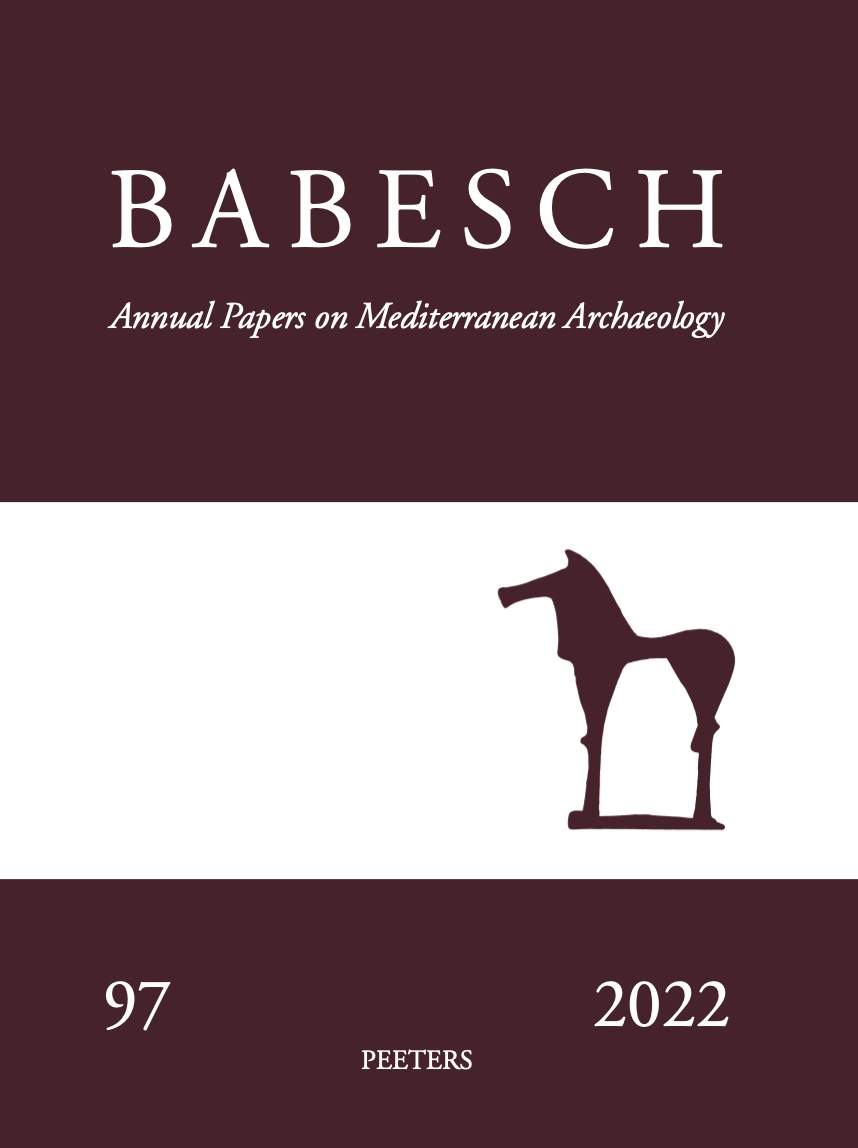 previous article in this issue previous article in this issue | next article in this issue  |

Preview first page |
Document Details : Title: Herakles in Brabant Subtitle: Die Amethyst-Gemme aus Sint-Oedenrode Author(s): PLATZ-HORSTER, Gertrud Journal: BABESCH Volume: 88 Date: 2013 Pages: 191-203 DOI: 10.2143/BAB.88.0.2987081 Abstract : In 2006 during the excavations in the centre of Sint-Oedenrode (NL), an extraordinary Hellenistic amethyst gem in a later gold pendant was discovered in a decidedly medieval context. It depicts in three-quarter view the head of a young man wearing a laurel wreath wrapped with a diadem. Despite intense abrasion to the surface of the gem, the ends of the diadem are visible fluttering on both sides of the man’s neck; the remains of a club above his shoulder, moreover, clearly identify him as the young Herakles. The gemstone can be dated by material, shape, technique, and style to the late 3rd or the first half of the 2nd century BC. It reproduces a true copy of the head of a classical Greek statue created ca 350 BC, which by the evidence of 20 surviving Roman marble copies of the 1st and 2nd centuries AD must have been quite famous. This statue type is known as the ‘Herakles Lansdowne’ after a copy found in the Villa Hadriana in Tivoli near Rome, now in the J. Paul Getty Museum in Malibu. By adding a laureate diadem the Hellenistic gem engraver characterized the young man as a ruler. But the entirely idealized head only allows suggestions as to who might have been assimilated to the hero. |
|


